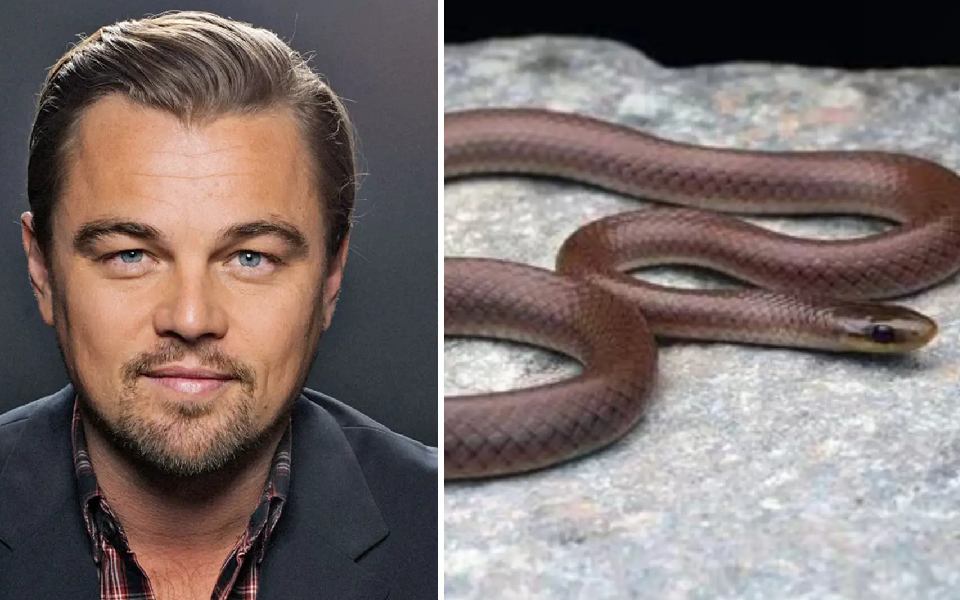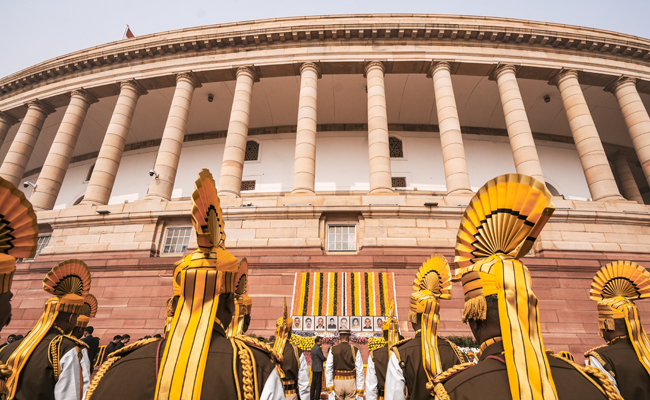New Delhi: A team of researchers from India, Germany, and the United Kingdom has discovered a new snake species in the western Himalayas, which has been named ‘Anguiculus dicaprioi’ or DiCaprio’s Himalayan snake, in honour of Hollywood actor and environmentalist Leonardo DiCaprio. The recognition is a tribute to DiCaprio’s significant contributions to environmental conservation.
The new species, identified in 2020 as part of a research project focused on India’s reptiles, was officially documented in Scientific Reports, a peer-reviewed journal, on Monday. Researchers classified the species under a newly established genus called ‘Anguiculus’, which translates to "small snake" in Latin.
Explaining the rationale behind the species’ name, the study noted that DiCaprio has been instrumental in raising awareness about critical environmental issues such as global climate change, biodiversity loss, and pollution’s impact on human health. His involvement in conservation efforts through funding for field research and awareness campaigns has also been highlighted. The common name for the species is ‘DiCaprio’s Himalayan snake’.
The research team, led by HT Lalremsanga, a professor in Mizoram University’s zoology department, made the discovery in Himachal Pradesh’s mountainous regions, specifically in Chamba and Kullu. While searching for lesser-known snake species, they encountered a few brown-coloured snakes basking on a mud road. According to the researchers, the snakes remained motionless when approached and exhibited no signs of aggression.
Upon conducting a detailed study, including DNA analysis and comparison with other known snake species, the team identified the new species. In addition to Himachal Pradesh, ‘Anguiculus dicaprioi’ has also been found in Nainital, Uttarakhand, and Chitwan National Park in Nepal.
The new species is described as small-sized, growing to around 22 inches, and has a distinctive broad collar with dark brown spots, a robust skull, and a steeply domed snout. The species inhabits altitudes of around 6,000 feet above sea level and has a set of dozens of teeth.
Other team members involved in the discovery include Zeeshan A Mirza, Virender K Bhardwaj, Saunak Pal, Gernot Vogel, Patrick D Campbell, and Harshil Patel.
Let the Truth be known. If you read VB and like VB, please be a VB Supporter and Help us deliver the Truth to one and all.
New Delh (PTI) The Congress on Saturday said it is perhaps not very surprising that India is not part of a US-led strategic initiative to build a secure silicon supply chain, given the "sharp downturn" in the Trump-Modi ties, and asserted that it would have been to "our advantage if we had been part of this group".
Congress general secretary in charge of communications Jairam Ramesh took a swipe at Prime Minister Narendra Modi, saying the news of India not being part of the group comes after the PM had enthusiastically posted on social media about a telephone call with his "once-upon-a-time good friend and a recipient of many hugs in Ahmedabad, Houston, and Washington DC".
In a lengthy post on X, Ramesh said, "According to some news reports, the US has excluded India from a nine-nation initiative it has launched to reduce Chinese control on high-tech supply chains. The agreement is called Pax Silica, clearly as a counter to Pax Sinica. The nations included (for the moment at least) are the US, Japan, the Republic of Korea, Singapore, the Netherlands, the United Kingdom, Israel, the United Arab Emirates, and Australia."
"Given the sharp downturn in the Trump-Modi ties since May 10th, 2025, it is perhaps not very surprising that India has not been included. Undoubtedly, it would have been to our advantage if we had been part of this group."
"This news comes a day after the PM had enthusiastically posted on his telephone call with his once-upon-a-time good friend and a recipient of many hugs in Ahmedabad, Houston, and Washington DC," the Congress leader asserted.
The new US-led strategic initiative, rooted in deep cooperation with trusted allies, has been launched to build a secure and innovation-driven silicon supply chain.
According to the US State Department, the initiative called 'Pax Silica' aims to reduce coercive dependencies, protect the materials and capabilities foundational to artificial intelligence (AI), and ensure aligned nations can develop and deploy transformative technologies at scale.
The initiative includes Japan, South Korea, Singapore, the Netherlands, the United Kingdom, Israel, the United Arab Emirates, and Australia. With the exception of India, all other QUAD countries -- Japan, Australia and the US -- are part of the new initiative.
New Delhi will host the India-AI Impact Summit 2026 on February 19-20, focusing on the principles of 'People, Planet, and Progress'. The summit, announced by Prime Minister Narendra Modi at the France AI Action Summit, will be the first-ever global AI summit hosted in the Global South.
Prime Minister Modi and US President Trump on Thursday discussed ways to sustain momentum in the bilateral economic partnership in a phone conversation amid signs of the two sides inching closer to firming up a much-awaited trade deal.
The phone call between the two leaders came on a day Indian and American negotiators concluded two-day talks on the proposed bilateral trade agreement that is expected to provide relief to India from the Trump administration's whopping 50 per cent tariffs on Indian goods.
In a social media post, Modi had described the conversation as "warm and engaging".
"We reviewed the progress in our bilateral relations and discussed regional and international developments. India and the US will continue to work together for global peace, stability and prosperity," Modi had said without making any reference to trade ties.





